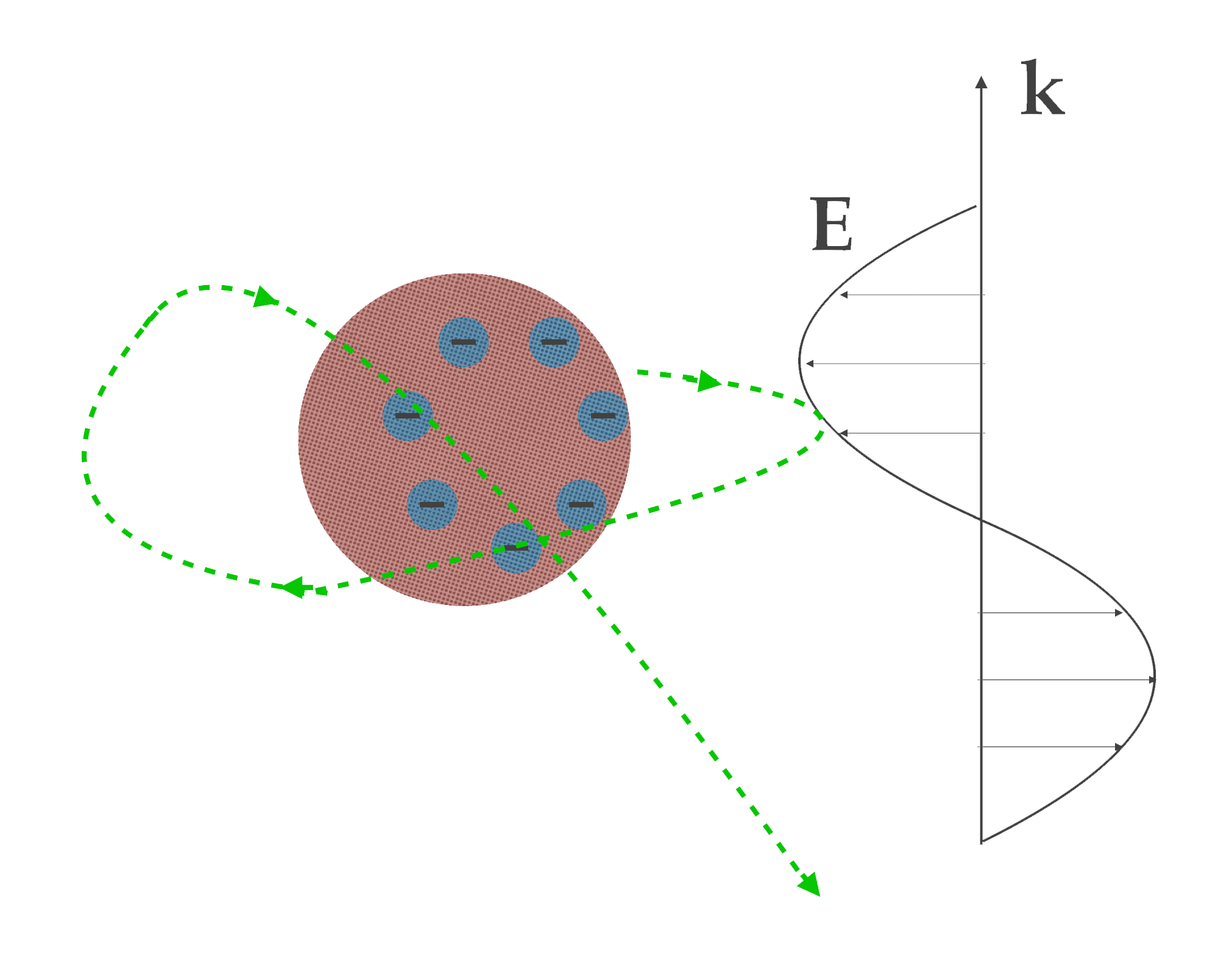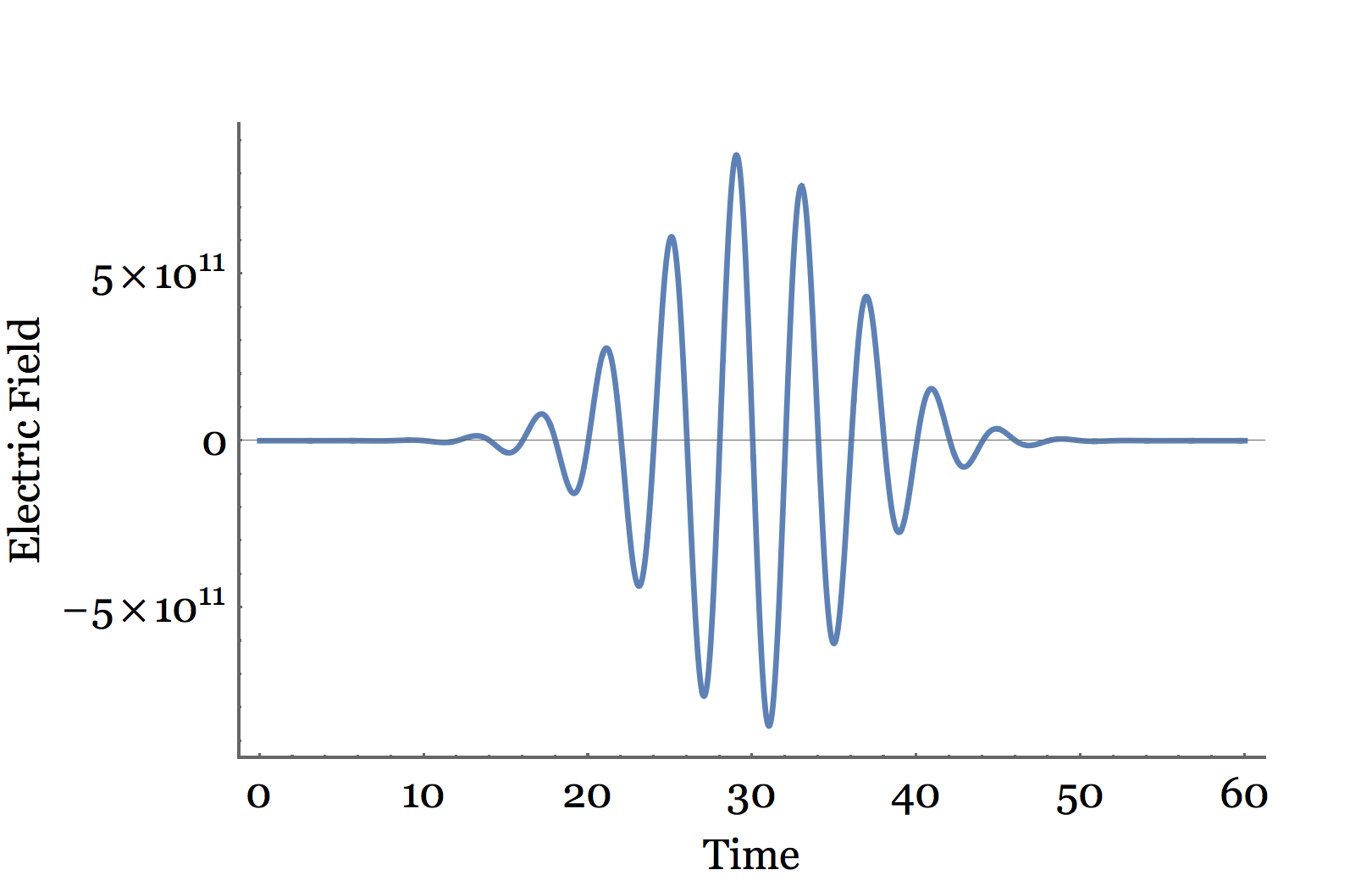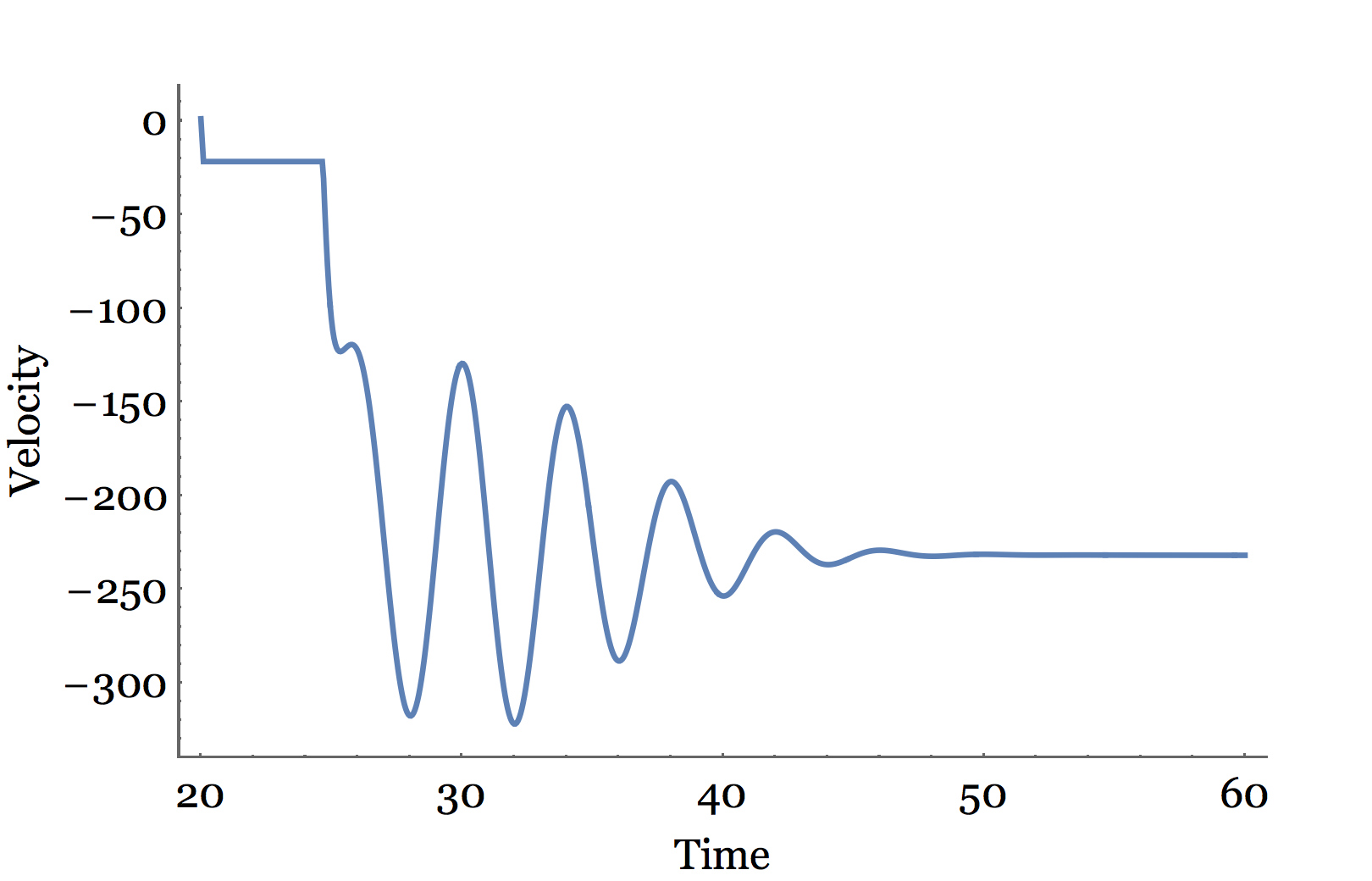
Plasma Simulation - Xin (Laura) Zhang
Figure 1: Schematic of Muli-pass stochastic heating.
Figure 2: A qualitative demo of the time evolution of the velocity of a single electron (bottom) in a laser field (top), where plasma shielding is present.
Overview
This is the theoretical side of the multi-pass stochastic heating of electrons by high-intensity plasma project. Here I try to model the single electron dynamics of the system, and investigate the dependency of heating efficiency on various parameters.
Current Progress
The basic concept of stochastic heating is as follows. A solid target is first ionized by a high-intensity laser pulse into a plasma. The electrons on the surface of the plasma will then be extracted by the electric field into the vacuum, and then kicked back into the plasma when the field reverses. When the electrons are back inside the plasma, they are shielded from the external field and will move straight through the plasma. The same process repeats when the electrons resurface into the vacuum after passing through the plasma, and more energy will be absorbed into the kinetic energy of the electrons.
When the kinetic energy of the electrons are high enough, they escape the Coulomb attraction of the now positively charged plasma, leaving the plasma with positive ions closely packed, resulting in a system with high potential energy. The plasma subsequently expands, converting potential energy into the kinetic, or thermal, energy of the ions.
In my project I try to simulate this process. By collecting a statistical sample of single electrons, we can investigate how the energy gain of electrons depend on parameters including the size of the plasma, frequency and intensity of the laser beam, and others.
(NOTE: Clicking any of these links will go to an embedded PDF screen. To get back to this page, simply click the back button on your browser.)
If you would like to see the slides from a presentation that Laura gave recently for her senior fall 2015 thesis talk,
click here.
If you would like to see the research poster from the summer of 2015,
click here.





